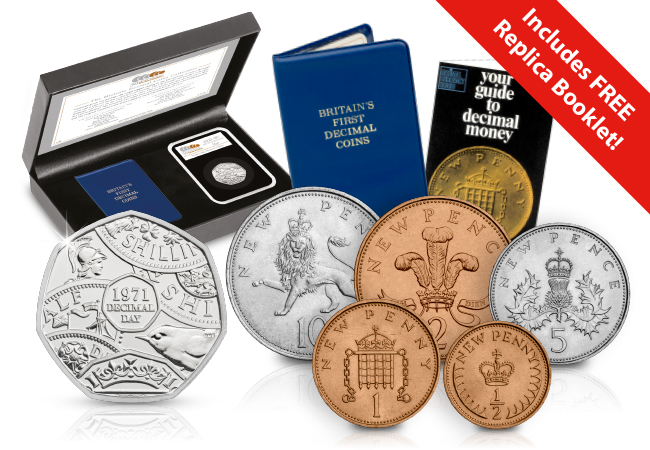Posts Tagged ‘Decimalisation’
Decimalisation: Your top five questions answered
This year marks the 50th anniversary of the Decimalisation of our currency. On 15th February 1971, known as Decimal Day (or D-Day), the country switched to the decimal currency (based on multiples of 10 and 100) that we are familiar with today. But what happened on that day, and why is it important to collectors?
Before then, Britain used a monetary system that dated thousands of years back to the Roman Empire! The problem with the old Pounds, Shillings, and Pence system (sometimes called ‘old money’) is that it was based on multiples of 12 and 240. This made it quite confusing – there were 12 pennies in a shilling and 240 pennies in a pound, and 20 shillings made a pound – certainly not easy to add up in your head!
We get a lot of questions about Decimalisation, so before we celebrate the anniversary next month, we’ve answered some of your top questions about the biggest change to UK currency ever!
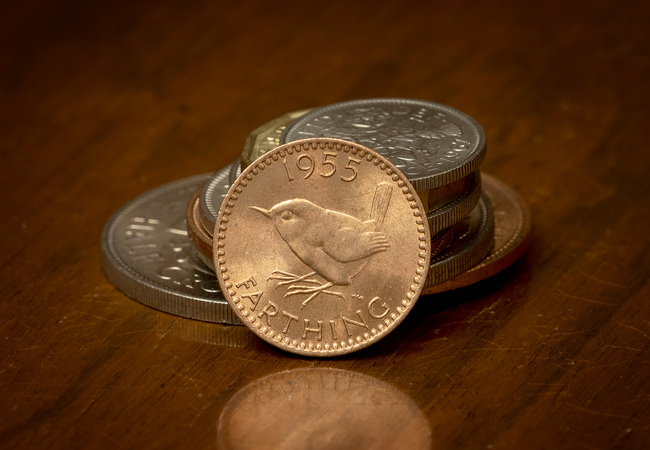
What were the coins called before Decimalisation?
The Pounds (£), Shillings (/-) and Pence (d) system included lots of coins with very different names to today’s coinage. A lot of these coins were given slang nicknames, such as ‘thrupence’ or ‘thrupny bit’ for a threepence, or a tanner for a sixpence. A Shilling was sometimes called a ‘bob’, and a ten shilling note would often be referred to as a ‘ten-bob‘ note.
| Pre-decimal Coin | Amount | Decimal Equivalent |
| Halfpenny | ½d. | 5⁄24p ≈ 0.208p |
| Penny | 1d. | 5⁄12p ≈ 0.417p |
| Threepence | 3d. | 1¼p |
| Sixpence | 6d. | 2½p |
| Shilling | 1/- | 5p |
| Florin | 2/- | 10p |
| Half Crown | 2/6 | 12½p |
| Crown | 5/- | 25p |
Who was the first country to go decimal?
Did you know the UK wasn’t the first country to go decimal? In fact, as early as 1704 Russia introduced the Ruble which was equal to 100 Kopecks, making it the first country to have a decimal coin. It was followed by France which introduced the Franc in 1795. Although the UK was one of the last to turn decimal, discussions first started in Britain as early as the 1820s, but the idea didn’t take off well with the public so it wasn’t until 150 years later that it actually happened.
When were the first decimal coins issued?
The first new decimal coins were actually issued before decimal day in 1971 – three years earlier in fact! In 1968 the plans for decimalisation were set in motion. To try and help the public acclimatise to the new decimal coins, the 5p and 10p, were issued, followed by the 50p a year later in 1969. This meant that the coins circulated alongside their pre-decimal siblings (Shilling, Florin, and 10 bob note) and were used interchangeably. By 1971 when the pre-decimal coinage ceased to be legal tender, only 3 new coins would be introduced (Half pence, one pence, two pence), making the jump to decimal currency a little easier for the public.
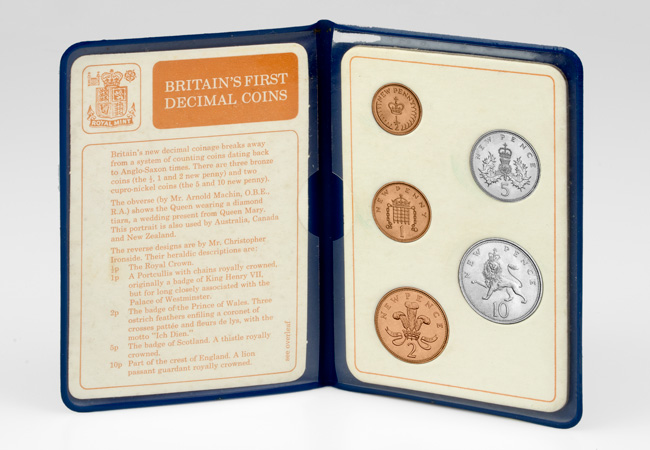
Why did the banks close for four whole days?
In 1971, very few banks used digital systems so on 10th February the banks closed for four days until Decimal Day. This allowed all outstanding cheques to be cleared in old money and all customers accounts to be converted into decimal coinage – and because most banks weren’t computerised, this had to be done manually! February was actually chosen as it was the quietest time of year for banks, shops, and public transport. It’s hard to imagine the banks closing for four days in a row now!
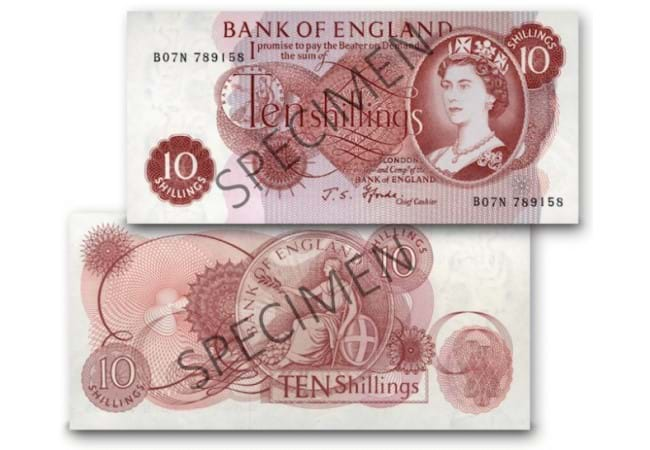
How did people compare between the two currencies?
Many people worried about shopkeepers inflating the prices of products during the changeover, but with a public information campaign that ran for almost 2 years prior, many people already had some idea of the conversions. And to help, currency convertors were made available to people, and shops displayed the prices in both currencies before and after Decimal Day. People could also continue to pay in old money, but they would receive their change in new money.
It took some time, but soon the decimal currency became familiar to everyone and continues to be the biggest change to UK coinage in thousands of years. In the lead up to the 50th anniversary, we’ll be issuing a series of blogs telling you all you need to know about this iconic moment in numismatic history, so make sure to stay tuned!
If you’re interested:
You can commemorate the 50th anniversary of Decimalisation now with the Historic Decimal Coins Collection! Including an ORIGINAL Decimal Coin Wallet, BRAND NEW BU 50p, and a FREE replica booklet. Click here to secure your Historic Decimal Coins Collection for JUST £29.99!
First Look: The New Royal Mint coins for 2021
Happy new year and most importantly… HAPPY NEW COINS! ?
Join me in our latest video, where I take a closer look at the FIVE brand new Royal Mint 2021 UK Coins!
If you’re interested…
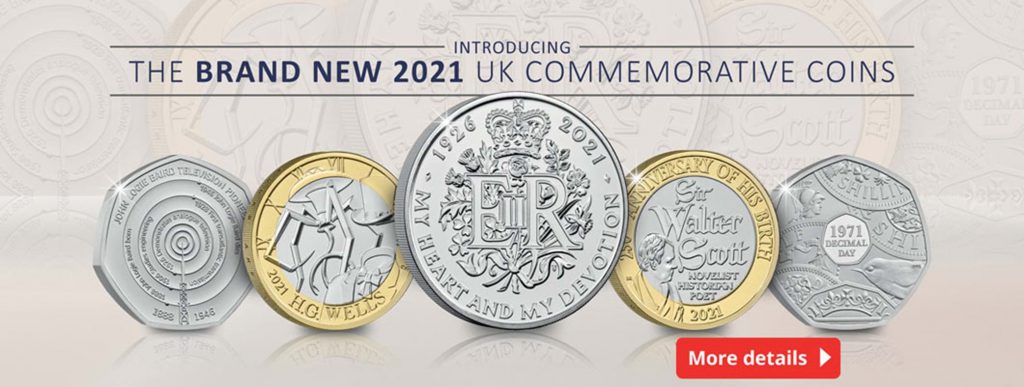
Click here to add the 2021 Annual Coins to your collection now >>
The history of the British crown coin…
Today crown coins are usually issued to mark special occasions of national importance and are intended to be commemoratives rather than ordinary circulation coins. But they have seen some significant changes over the decades...
The British crown first appeared during the reign of Henry VIII and was struck from gold. Issued in 1544, the ‘Double rose’ as it came to be known had a twin rose deign topped with a large crown on the obverse.
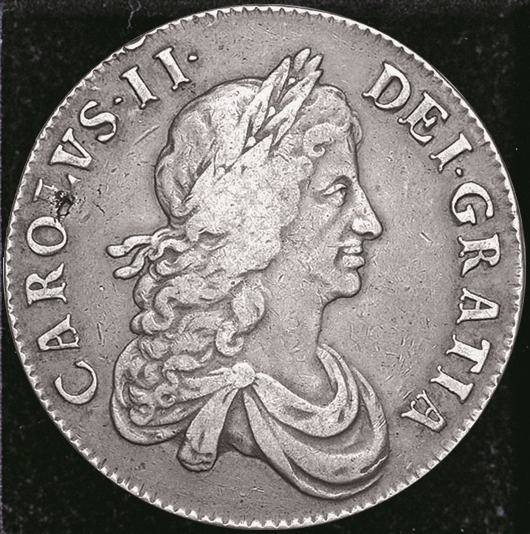
Charles II Crown
Crown coins weren’t struck regularly from silver until 1662 under Charles II – which is when all the previous denominations of gold coins were replaced by milled guineas.
Silver crown coins enter circulation…
The crown issued for circulation that year marked the end of hammered coins as the Royal Mint transferred to mill striking permanently after centuries of working by hand.
At this point the crown started to look more familiar, and it has remained roughly the same size (almost 30mm in diameter) to the present day.
The coins’ generous dimensions leant it an air of importance, and crowns were usually struck in a new monarch’s coronation year. This was true of every monarch since King George IV up until the present monarch in 1953, with the single exception of King George V.
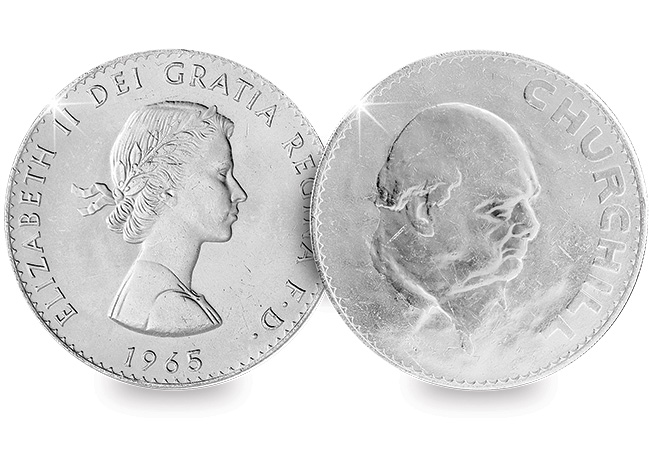
The 1965 Churchill Memorial Crown – the first crown coin to feature a non-monarch
With its large size, many of the later coins were primarily commemoratives. The 1965 issue carried the image of Winston Churchill on the reverse, the first time a non-monarch or commoner was ever placed on a British coin, and marked his death.
Decimalisation arrives…
Traditionally crowns had a face value of five shillings, but after decimalisation on 15th February 1971 the crown became the 25p coin – one of the UK’s most unusual denominations.
The 25p pieces were issued to commemorate significant events, with one of the earliest issues being the Silver Wedding Anniversary of Queen Elizabeth II and Prince Phillip in 1972.
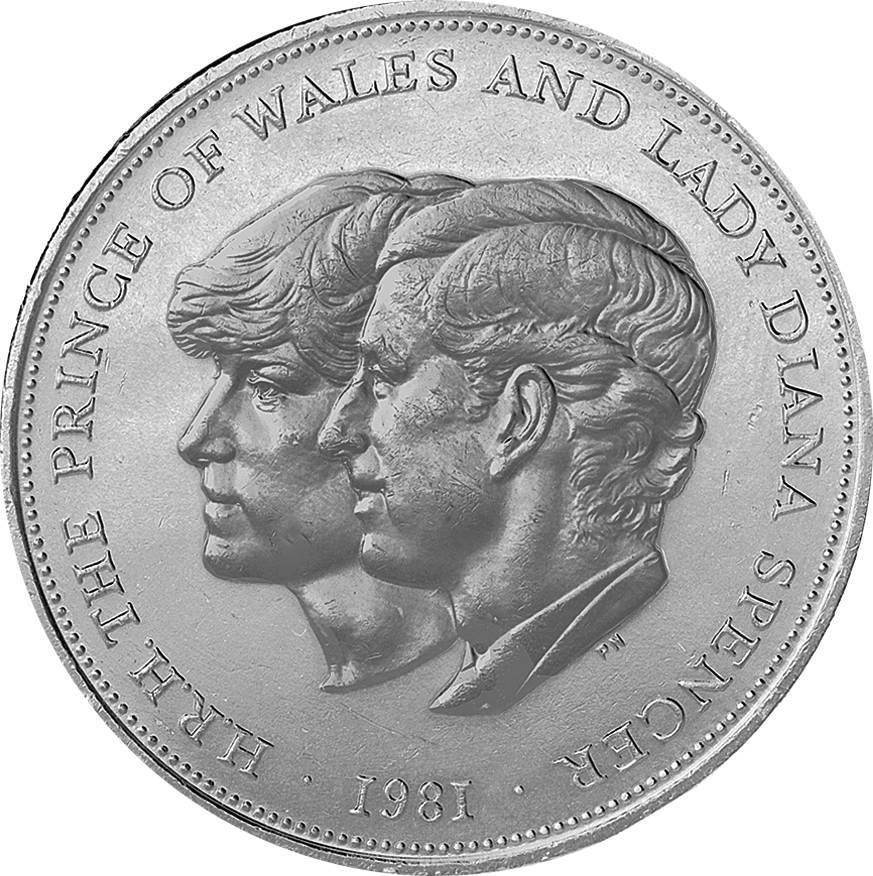
1981 Charles and Diana Wedding Crown
In 1980 an issue was authorised for the 80th birthday of Queen Elizabeth The Queen Mother; and, in 1981, the coin was issued to celebrate the marriage of Charles, Prince of Wales and Lady Diana Spencer. All of these issues were struck in large mintages, in plastic cases, and in cupro-nickel. However, in addition to this, limited numbers of collectors’ coins of these modern issues were struck to proof quality separately by the Royal Mint in sterling silver.
Legal tender changes from 25p to £5…
The legal tender value of the crown remained as 25p until 1990 when their face value was increased to £5 in view of its relatively large size compared to other coins.
Since the value increased to £5 in 1990 it quickly became recognised as the nation’s flagship commemorative coin and remained possible to buy these coins through banks and post offices (as well as the Royal Mint, The Westminster Collection and other distributors) in circulating quality right up until 2009.
Farewell to the face value £5 coin…
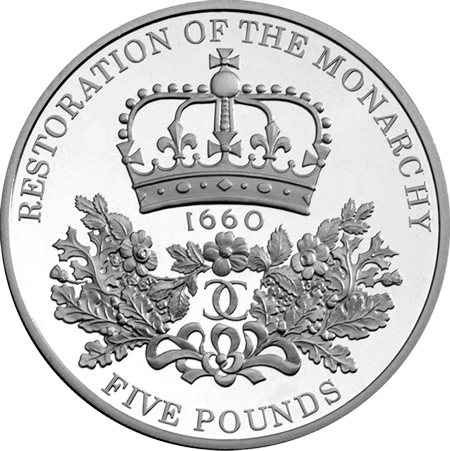
The last ever £5 for £5 crown coin – 2010 The Restoration of the Monarchy
£5 coins continued to be available for a couple more years at face value in brilliant uncirculated quality. But sadly, today the Royal Mint only releases £5 coins in presentation packs selling for £13.
The British crown has undoubtedly seen many changes throughout the years, from metals, size and denomination – it certainly is a coin with an interesting history.
What’s been the most significant change for you? Leave a comment below.
Sign the petition to bring back the £5 for £5 by clicking here

Discover how you can be one of just 1,000 collectors able to own the new 2016 UK Queen’s 90th Birthday £5 for £5 – click here.

